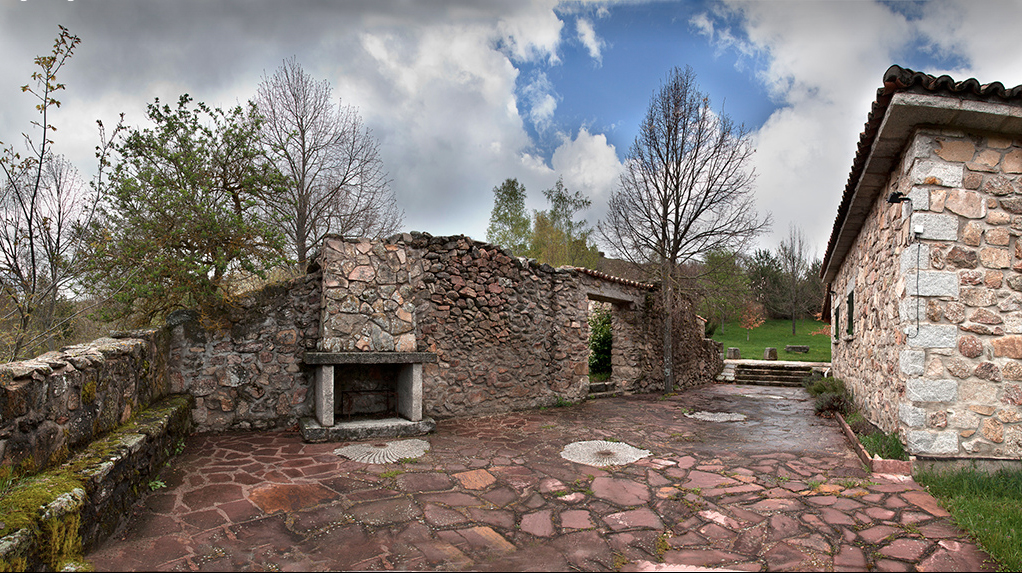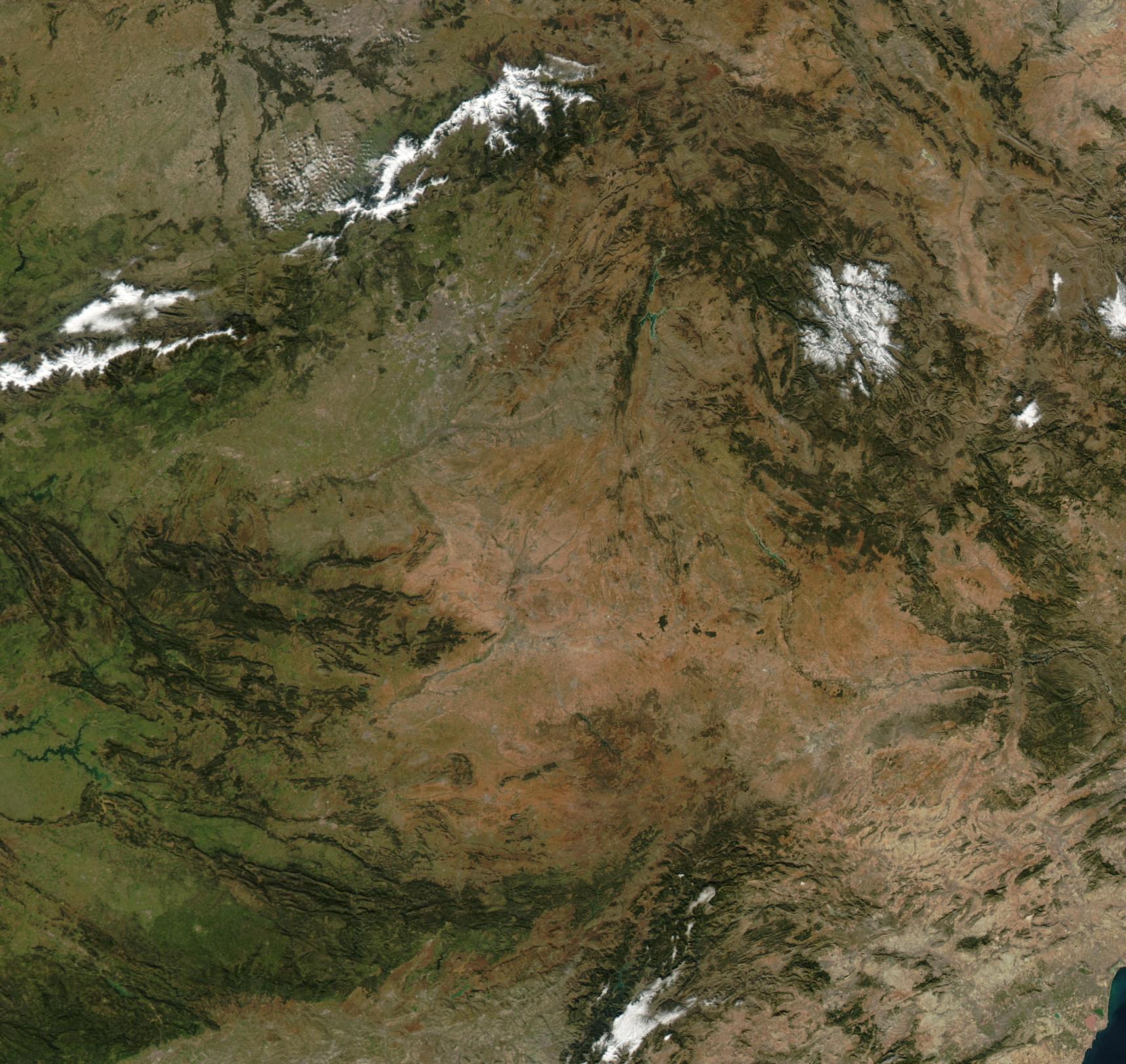|
Venta (establishment)
A venta, ventorro or ventorrillo is an establishment or building of ancient tradition in Spain and some other Hispanic countries located near paths or unpopulated areas, and later near roads or service stations. They can be considered as an equivalent to inns, though their main characteristic feature is the fact that they are almost always isolated, contrary to ''mesones'' and ''posadas'' which are located near or inside towns and villages. Throughout their history, ventas have offered food and accommodation to travellers. In Spain, their antiquity is well referenced and documented by literature, like in ''The Book of Good Love'' (''ca.'' 1330) or ''Don Quixote'' (1615), or in paintings like ''La riña en la Venta Nueva'' of Francisco Goya. Use of the term has also been registered in some Hispanic-American countries, like the Venta de Aguilar, the first one established in the Mexico-Veracruz road, or the popular Venta de Perote, both in Mexico. Description Although the archite ... [...More Info...] [...Related Items...] OR: [Wikipedia] [Google] [Baidu] |
Venta De Cornejo
Venta may refer to: Architecture *Venta (establishment), a Spanish typical inn generally located in unpopulated and remote rural areas. Places *Venta (river), a river in Lithuania and Latvia *Venta (city), a city in Lithuania *Venta (village), a village in Lithuania *Venta (catamaran), ''Venta'' (catamaran), a 1973 Latvian catamaran *''Venta'', Common Brittonic for "market" or "town" in Iron Age Britain, used particularly for: **Venta Belgarum (Venta of the Belgae), the Roman town of Winchester in England **Venta Icenorum (Venta of the Iceni), the Roman town of Caistor St Edmund in England **Venta Silurum (Venta of the Silures), the Roman town of Caerwent in Wales People *Javi Venta (born 1975), Spanish footballer *Krishna Venta (1911–1958), American cult leader See also * La Venta (other) {{disambiguation, surname, geo ... [...More Info...] [...Related Items...] OR: [Wikipedia] [Google] [Baidu] |
Costumbrismo
''Costumbrismo'' (sometimes anglicized as costumbrism, with the adjectival form costumbrist) is the literary or pictorial interpretation of local everyday life, mannerisms, and customs, primarily in the Hispanic scene, and particularly in the 19th century. ''Costumbrismo'' is related both to artistic realism and to Romanticism, sharing the Romantic interest in expression as against simple representation and the romantic ''and'' realist focus on precise representation of particular times and places, rather than of humanity in the abstract.Antonio Reina PalazónEl Costumbrismo en la Pintura Sevillana del Siglo XIX Biblioteca Virtual Miguel Cervantes. Accessed online 2010-01-22. It is often satiric and even moralizing, but unlike mainstream realism does not usually offer or even imply any particular analysis of the society it depicts. When not satiric, its approach to quaint folkloric detail often has a romanticizing aspect. ''Costumbrismo'' can be found in any of the visual or lite ... [...More Info...] [...Related Items...] OR: [Wikipedia] [Google] [Baidu] |
Bien De Interés Cultural
A Bien de Interés Cultural is a category of the heritage register in Spain. The term is also used in Venezuela and other Spanish-speaking countries. The term literally means a "good of cultural interest" ("goods" in the economic sense) and includes not only material heritage (cultural property), like monuments or movable works of art, but also intangible cultural heritage, such as the Silbo Gomero language. Some ''bienes'' enjoy international protection as World Heritage Sites or Masterpieces of the Oral and Intangible Heritage of Humanity. History In Spain, the category of ''Bien de Interés Cultural'' dates from 1985 when it replaced the former heritage category of '' Monumento nacional ''(national monument) in order to extend protection to a wider range of cultural property. The category has been translated as "Cultural Interest Asset". ''Monumentos'' are now identified as one of the sub-categories of ''Bien de Interés Cultural.'' Sub-categories The movable heritage d ... [...More Info...] [...Related Items...] OR: [Wikipedia] [Google] [Baidu] |
Almodóvar Del Campo
Almodóvar del Campo is a municipality of Spain, located in the province of Ciudad Real, autonomous community of Castilla–La Mancha. Featuring a total area of 1.208,25 km2, it is the largest municipality in the region and one of the largest municipalities in Spain. As of 1 January 2020, it had a population of 5,983. Geography It lies some 14 km S.S.W. of the provincial capital, on the northern side of the Sierra de Alcudia. The city lies at about 669 metres above mean sea level. History The former settlement of ''Sisapo'' has been identified as the La Bienvenida archaeological site, which is located near the hamlet of the same name. The foundation mark has been pushed back to the late-8th to early-7th centuries BC. There is doubt on whether ''Sisapo'' was an Oretani city, although Plinius presented it as a Turduli city. Sisapo thrived during the Roman era on the basis of the exploitation of cinnabar, a mercury ore. The mines decreased in activity by the late-2nd t ... [...More Info...] [...Related Items...] OR: [Wikipedia] [Google] [Baidu] |
Venta De La Inés
Venta may refer to: Architecture *Venta (establishment), a Spanish typical inn generally located in unpopulated and remote rural areas. Places *Venta (river), a river in Lithuania and Latvia *Venta (city), a city in Lithuania *Venta (village), a village in Lithuania * ''Venta'' (catamaran), a 1973 Latvian catamaran *''Venta'', Common Brittonic for "market" or "town" in Iron Age Britain, used particularly for: **Venta Belgarum (Venta of the Belgae), the Roman town of Winchester in England **Venta Icenorum (Venta of the Iceni), the Roman town of Caistor St Edmund in England ** Venta Silurum (Venta of the Silures), the Roman town of Caerwent in Wales People *Javi Venta (born 1975), Spanish footballer *Krishna Venta (1911–1958), American cult leader See also * La Venta (other) La Venta is an archaeological site of Mexico. La Venta may also refer to: * La Venta (Colombia), a fossil locality in Colombia * La Venta, Francisco Morazán, a municipality in Honduras * La Venta, ... [...More Info...] [...Related Items...] OR: [Wikipedia] [Google] [Baidu] |
Province Of Ciudad Real
The province of Ciudad Real () is a province in the southwestern part of the autonomous community of Castile-La Mancha, Spain. It is bordered by the provinces of Cuenca, Albacete, Jaén, Province of Córdoba (Spain), Córdoba, Province of Badajoz, Badajoz, and Province of Toledo, Toledo. It is partly located in the old natural region of La Mancha. Its capital is Ciudad Real. It is the third largest province by area in all of Spain, after Province of Cáceres, Cáceres and Badajoz. The historic Comarcas of Spain, comarca Campo de Calatrava is located in the center of the province. History Ciudad Real was one of the 49 provinces in which Spain was divided in the 1833 territorial division of Spain, territorial reorganization of 1833, taking its name from its largest city and capital. Its limits corresponded more or less to the historical province of La Mancha, which was part of the kingdom of Toledo. The Spanish government created the autonomous community of Castilla-La Mancha on ... [...More Info...] [...Related Items...] OR: [Wikipedia] [Google] [Baidu] |
Daimiel
Daimiel is a municipality in Ciudad Real, Castile-La Mancha, Spain. It has a population of 17,342, and a mechanical industry. The football club is Daimiel CF. The Tablas de Daimiel National Park, a well-known but endangered wetland natural reserve, lies partly within the boundaries of the town. History Daimiel is the location of the Motilla del Azuer, a Bronze Age fortification. The " Martyrs of Daimiel" were killed here in 1936 during the Spanish Civil War The Spanish Civil War ( es, Guerra Civil Española)) or The Revolution ( es, La Revolución, link=no) among Nationalists, the Fourth Carlist War ( es, Cuarta Guerra Carlista, link=no) among Carlists, and The Rebellion ( es, La Rebelión, link .... References Municipalities in the Province of Ciudad Real {{CastileLaMancha-geo-stub ... [...More Info...] [...Related Items...] OR: [Wikipedia] [Google] [Baidu] |
Venta De Borondo
Venta may refer to: Architecture *Venta (establishment), a Spanish typical inn generally located in unpopulated and remote rural areas. Places *Venta (river), a river in Lithuania and Latvia *Venta (city), a city in Lithuania *Venta (village), a village in Lithuania * ''Venta'' (catamaran), a 1973 Latvian catamaran *''Venta'', Common Brittonic for "market" or "town" in Iron Age Britain, used particularly for: **Venta Belgarum (Venta of the Belgae), the Roman town of Winchester in England **Venta Icenorum (Venta of the Iceni), the Roman town of Caistor St Edmund in England ** Venta Silurum (Venta of the Silures), the Roman town of Caerwent in Wales People *Javi Venta (born 1975), Spanish footballer *Krishna Venta (1911–1958), American cult leader See also * La Venta (other) La Venta is an archaeological site of Mexico. La Venta may also refer to: * La Venta (Colombia), a fossil locality in Colombia * La Venta, Francisco Morazán, a municipality in Honduras * La Venta, ... [...More Info...] [...Related Items...] OR: [Wikipedia] [Google] [Baidu] |
Cultural Heritage
Cultural heritage is the heritage of tangible and intangible heritage assets of a group or society that is inherited from past generations. Not all heritages of past generations are "heritage"; rather, heritage is a product of selection by society. Cultural heritage includes cultural property, tangible culture (such as buildings, monuments, landscapes, books, works of art, and artifacts), intangible heritage, intangible culture (such as folklore, traditions, language, and knowledge), and natural heritage (including culturally significant landscapes, and biodiversity).Ann Marie Sullivan, Cultural Heritage & New Media: A Future for the Past, 15 J. MARSHALL REV. INTELL. PROP. L. 604 (2016) https://repository.jmls.edu/cgi/viewcontent.cgi?article=1392&context=ripl The term is often used in connection with issues relating to the protection of Indigenous intellectual property. The deliberate act of keeping cultural heritage from the present for the future is known as Conservation (cul ... [...More Info...] [...Related Items...] OR: [Wikipedia] [Google] [Baidu] |
Castilla–La Mancha
Castilla–La Mancha (, , ), or Castile La Mancha, is an autonomous community of Spain. Comprising the provinces of Albacete, Ciudad Real, Cuenca, Guadalajara and Toledo, it was created in 1982. The government headquarters are in Toledo, and its largest city is in Albacete. The region largely occupies the southern half of the Iberian Peninsula's Inner Plateau, including large parts of the catchment areas of the Tagus, the Guadiana and the Júcar, while the northeastern relief comprises the Sistema Ibérico mountain massif. It is bordered by Castile and León, Madrid, Aragon, Valencia, Murcia, Andalusia, and Extremadura. It is one of the most sparsely populated of Spain's regions. Albacete, Guadalajara, Toledo, Talavera de la Reina and Ciudad Real concentrate the largest urban areas in the region. Geography Castilla–La Mancha is located in the middle of the Iberian peninsula, occupying the greater part of the Submeseta Sur, the vast plain composing the southern par ... [...More Info...] [...Related Items...] OR: [Wikipedia] [Google] [Baidu] |
Pyrenees
The Pyrenees (; es, Pirineos ; french: Pyrénées ; ca, Pirineu ; eu, Pirinioak ; oc, Pirenèus ; an, Pirineus) is a mountain range straddling the border of France and Spain. It extends nearly from its union with the Cantabrian Mountains to Cap de Creus on the Mediterranean Sea, Mediterranean coast. It reaches a maximum altitude of at the peak of Aneto. For the most part, the main crest forms a divide between Spain and France, with the microstate of Andorra sandwiched in between. Historically, the Crown of Aragon and the Kingdom of Navarre extended on both sides of the mountain range. Etymology In Greek mythology, Pyrene (mythology), Pyrene is a princess who eponym, gave her name to the Pyrenees. The Greek historiography, Greek historian Herodotus says Pyrene is the name of a town in Celts, Celtic Europe. According to Silius Italicus, she was the virgin daughter of Bebryx, a king in Narbonensis, Mediterranean Gaul by whom the hero Hercules was given hospitality during his ... [...More Info...] [...Related Items...] OR: [Wikipedia] [Google] [Baidu] |






